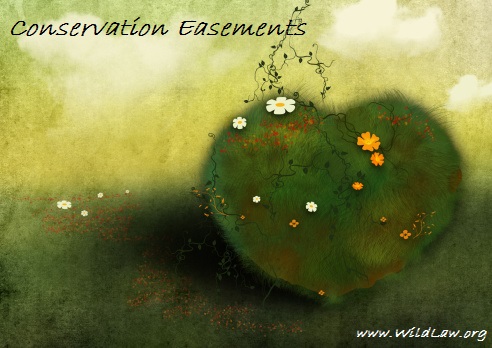This post is also available in:
 English
English
In an America more than 150 years after Manifest Destiny drove pioneers west to seek their fortune, the greatest concern for conservationists is that Urban Sprawl could easily become Urban Thrall. This would mean that potential homeowners end up buying property in what would otherwise remain pristine habitat. This is where conservation easements come into play.
Conservation easements are one way to separate a particularly desirable plot of land from common usage. These easements insure that vulnerable tracts of land, supporting numerous indigenous and sometimes endangered species, remain viable.
Conservation easements are almost completely unrelated to eminent domain. In fact, carefully crafted conservation statutes insure that such land qualifies under the 824p (i) when conservancy organizations partner with state or federal government entities. Finally, easements acquired by land trusts after 2006 (per the federal Farm and Ranch Lands Protection Program) are “likely protected” under the 824p (e) exception. The 824p (E) clearly excludes land owned by the United States or a state.Typically, the owner or grantor of this land gives a federally supported (or connected) conservation organization access to a private plot of land in exchange for certain privileges. Owners who grant this land may still be able to grow crops or raise cattle, for example, but may not build additional structures. In exchange, they get a tax deduction.

In spite of that, energy companies remain somewhat successful in separating portions of such easements under eminent domain in order to install power lines. Fortunately, this type of public-service usage generates little danger to high-quality wildlife habitats once construction is complete. Equally important in this type of withdrawal, agencies like the Bureau of Land Management will – at the behest of the conservancy in question – demand an Environmental Impact Report, or EIR. If the power company in question can find an equally effective (if somewhat more complicated and expensive) path for said power line, it will be forced to use it.
Who Are These Conservation Organizations, and What Do They Do?
A prime example of the functioning of these consortiums is seen in Maine. Maine, which has 3,478 miles of coast – more than any other coastal state – was recently in danger of seeing its pristine, historic Atlantic coastline converted into residential development, with a sprinkling of small commercial entities like grocery stores, clothing shops and hardware stores filling out the bill.
Now, thanks to conservancy-minded individuals and organizations, coastal Maine is gradually being withdrawn using conservation easements operating under the Maine Community Policing Institute (MCPI, now the Maine Institute for Public Safety). The MCPI is comprised of 70 coastal organizations including the Maine Coast Heritage Trust, the Maine State Planning Office, the Land Trust Alliance, and the National Oceanic and Atmospheric Administration (NOAA) Coastal Services Center.
Conservancy Organizations Exist Across the Nation
But Maine – and in fact the Atlantic coast in general – is not the only area where conservationists are attempting to protect historic areas. Land trusts can preserve not only lakes and scenic or historic acreage, but also highly selective areas like the Nebraska Sandhills. It can also protect Americas’ rivers, both at their headwaters and along their course where they pass through old growth forests, swamps and marshlands.
Some of these preserves, like the Nebraska Sandhills, have been hugely successful not only in relocating energy company’s right-of-way, but doing so in such a fashion that the item is not only tabled but permanently withdrawn from consideration. For an example of this, study the Keystone XL pipeline, which a Nebraska judge ruled unsafe even in the face of a state law that allowed the pipeline to proceed anywhere through Nebraska.
In all, 238 land trusts from Alabama to Wyoming currently protect America’s selective habitat and endangered species acreage. In fact, these organizations grow more powerful year after year as the American public takes up the banner of conservation under organizations like Ducks Unlimited (Wetlands America Trust), the Nature Conservancy, and the Wilderness Land Trust.
Whether in Alaska, under the umbrella of the Kachemak Heritage Land Trust which protects the Kenai Peninsula, or Idaho’s Teton Regional Land Trust, dedicated conservationists volunteer their time alongside state and federal representatives to insure that the widespread degradation of the early 20th century does not continue.
The surprising thing is that most of these conservation organizations, and their easements, were established in the past six years – a testimony to the growing strength of environmentalists and citizens who see the nation’s special places as objects well worth saving.

I have enjoyed hinkig and photographing at the beautiful White Pines Nature Preserve. I’m shocked and dismayed to learn that logging, including clear cutting, is part of your practice. I would be more hesitant in my view of this if you were getting advice on logging from biologists or environmental scientists, but as it is, you learn where to log based on the recommendation from professional loggers! You are making a mistake on judging the health of a forest based on the amount of money that the trees can bring in. The health of a forest, especially from a land conservancy’s point of view, should be determined based on the level of biodiversity, inclusion of rare and native species, protection of watersheds, and simply having spaces that aren’t destroyed by logging.